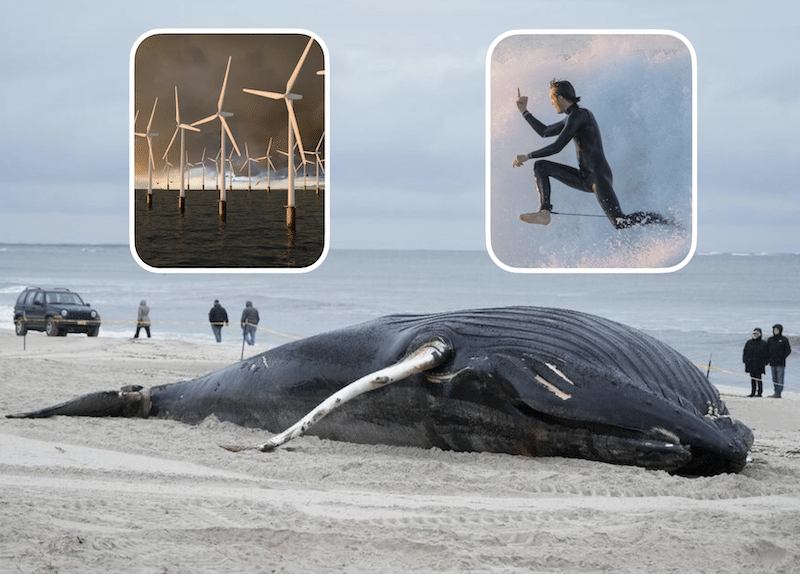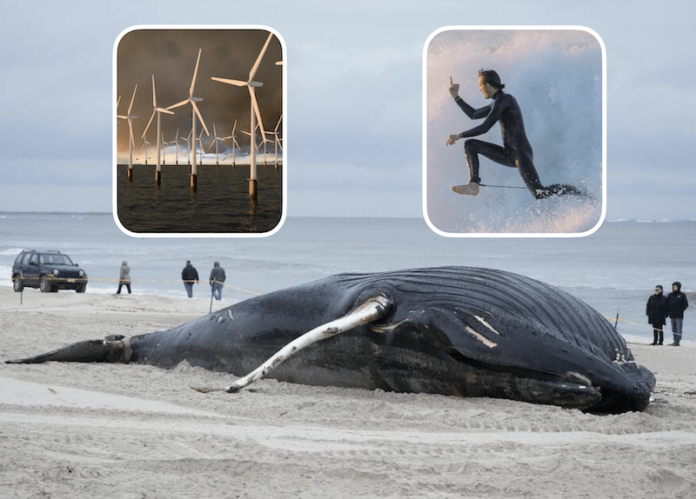
Journalist visits county assessor’s office to find out who has right of way at Rincon, surfers or homeowners?
A few years ago on Thanksgiving Day, a property owner near the bottom of Rincon Point complained that I was standing on his land.
This came as a surprise to me.
I could readily see the low retaining wall that separated his patio from where I was standing. What I did not see was any other sign that the space I occupied belonged to him.
Somehow, I had trespassed across a property line that was invisible to me. The encounter nagged at me.
Was I standing on the public beach or private property?
Since then, a few properties along the lower section of the point have extended their landscaping outward, in a likely attempt to gain some space between their private patios and the public beach. Most of low boundary walls that march up the point already have pointed rocks or flower pots placed along the top to prevent anyone from sitting on them, much like the spikes placed on buildings to deter birds.
In truth, surfers are not all that different from a pack of squawking sea gulls.
Recently, I walked back to the parking lot after riding some hilariously mediocre waves. I was thinking about how stupid surfing is when I tripped over one of the cobbles a property owner had pulled off the beach and used to section off their plants into a cute rock-framed bed. This hurt my toe and made me curse loudly.
I decided right then and there that I was going to figure this whole thing out. I’m just a dumb surfer, but surely, I should be able to find the beach. Where does the public beach end and the homeowners private space begin?
You would think it would be easy to find out, but it turns out that sometimes the most obvious questions are the most complicated. Also, I have gained a truly irrational hatred for land surveyors.
How do I get to Rincon?
Exit Bates Road, you can’t miss it. Now that we’re all here, let’s get some basic geography out of the way. The county line between Santa Barbara and Ventura runs down the middle of Rincon Creek, commonly known as the rivermouth where it meets the beach. The area to the west of the rivermouth is Santa Barbara County. Head east toward the Rincon cove, and suddenly, you’re in Ventura County.
You can even stand in both counties at the same time, if you want. You do you.
A private, gated community occupies the low-lying peninsula that creates the famous point, and a nearly unbroken line of houses runs the length of the beach. Local memories are not super clear on dates and details, but until sometime in the early 1980s, surfers parked on the freeway shoulder and climbed down a short embankment to access the Rincon cove.
To reach the beach at the top of the point required climbing down the bluffs. I feel that you will not be surprised to learn that it was also a nude beach. Off-season swells remained a tightly-held secret.
“Access was tricky, and owners tried to keep surfers out,” one long-time local told me.
This makes sense. Surfers are gross.
It’s all a lot easier now. No more climbing down a precarious cliff. Pull into the parking lot owned by Santa Barbara County Parks, walk down the stairs, and surf the top of the point. A sign just before the staircase says that nudity is prohibited. Modern times are so inhibited.
California State Parks meanwhile owns the lower parking lot and the access trail to the cove.
A ribbon of beach runs from the State Parks access trail to the rivermouth, bounded by the ocean on one side and the line of houses on the other. Ventura County owns this part, and it was news to me to discover that only the parking lot, smelly pit toilet, and trail are part of the State Parks.
I will go ahead and confess that it took longer than I’d like to admit for me to discover this detail. The devil loves to lurk in the details.
Let’s find the beach
While the beach at the top of the point is spacious with much glorious white sand most of the year, the cove section is a considerably more intimate affair. Into the tight space between the ocean and the houses cram beach-goers, Wavestorms, vintage longboards, dirty towels, pot smoke, melted wax and the other assorted detritus surfing creates.
And it’s this zone on the Ventura County side of the point where property owners seem to want to create a little distance from all of that.
If I wanted to find the beach’s boundaries, Ventura County seemed like the most obvious place to look. I thought surely I could find a map or other useful thing that explained where the beach begins and ends.
It is good to have hopes and dreams, if only so that they can be dashed on the cruel rocks of reality.
While I did find several line drawings of the point and its houses, I did not find a map sufficiently detailed to show the boundaries with any exactitude. Text descriptions proved no less illuminating.
One example airily stated that Rincon beach extended up to the houses. After digging through visitor information and county planning documents, I did not find any mention of an easement or buffer in front of the private properties.
There was nothing that said clearly, “Hey dumb surfers! Stay away from the houses!”
One document helpfully explained the California Coastal Act requirements, which demand access to the mean high tide line. But that’s the minimum, and none of the long-time locals I asked could recall the beach itself at Rincon as ever being private. And the holy grail of my search, a handy map eluded me. I still had not found the beach.
Sitting in my glass house
Built in 1969, the Glass House sits close to the midpoint of Rincon Cove, where it serves as a lineup marker much like the flagpole that stands at the cove’s top. Originally, the house’s ocean-facing façade featured massive windows framed in dark wood, making the nickname an obvious choice.
A more durable stone has since replaced the wood and the Glass House now boasts a red-tile roof and a vaguely Italianate style. It does still live up to its name, though by featuring many windows.
For years, a trail has run the length of the cove to the flagpole. It’s never been official, but instead has reflected the migratory habits of many winters of surfers.
Park in the State Parks lot, use the stinky toilet, and walk down to the beach. Cruise the trail to check the top of the point and have a look around. Sit on a chunk of drift wood and throw rocks, because the tide is too high. Walk back up the trail, because the tide is perfect, and paddle out at the flagpole or the rivermouth. High tides can cover the beach entirely, so the trail is a pretty useful thing.
Sometime this past summer, the owners of the Glass House, or someone like them seem to have decided that the trail passed entirely too close to their property.
First, stacks of driftwood appeared, which blocked the entrance and exit to the trail in front of the house. A low wall of cobbles and piles of driftwood also enclosed two square areas out in front of the patio, and a new cobbled walkway, built from the beach’s rocks led to the patio’s gate. Soon after, the stacks of driftwood moved to cover the trail itself.
We all know that there are more surfers than ever now. That reality means that beaches like Rincon have become more crowded. It is perhaps understandable that a property owner might become weary of watching a steady stream of surfers walk past their house. As we have established, surfers are gross. That’s all well and good.
But if the trail passes over public land, it’s not the property owner’s decision to make. On our side of the line, we can be as gross as we want. So, where is the line?
It’s Cool to Hate
If you’ve ever bought a house in the U.S., you will know that property lines and many other such details about your beautiful house are a matter of public record.
Perhaps I could at last find the beach at the County Assessor’s Office, where these records are housed. If property lines are a matter of public record, surely I could find this useful information. Then I would know where I could stand. As I’m sure you can predict by now, nothing in this life is ever as simple as we hope.
According to records at the Ventura County Assessors Office, the Glass House sits on an 11,868 sq. ft. lot with 4701 sq. ft. of living space. There’s four bedrooms and 3.5 baths, if you’re counting. The lot measures 88 feet wide and 136 feet deep.
While I was in the records, I took a look at several other properties along the beach, including the one where the man told me to move along. Each lot had specific dimensions, similar to the Glass House. Each also has an assessed worth amounting to dizzying sums of money.
The County Assessor’s Office also helpfully provides surveyor’s maps of the county’s properties. After much searching and flailing, I located the parcel map for Rincon del Mar. Each property is neatly traced out and numbered. The map also includes the winding private roads within the gated community. The beach side property lines run roughly straight up the point with a few gentle bends along the way. Neatly printed coordinates run along each property line.
You will be getting excited now! You will be thinking that at last, we have found the answer.
Unfortunately, you will be wrong. When land surveyors draw their maps, they take a series of measurements from fixed known starting points using an instrument called a theodolite. These starting points can be manhole covers or other important landmarks. Then the surveyors do math stuff with triangles to arrive at their coordinates. This process creates more accurate measurements than using satellite-based GPS.
It also means that a dumb surfer like me can not use the coordinates from a land surveyor’s map to find the beach. I can not do the math stuff with triangles or see the world through the fancy surveyor’s machine. I’m sure it looks very nice in there.
To find the property lines drawn on the county’s parcel map would require a land surveyor to retrace the coordinates from the map’s starting point. So, now you know why I hate land surveyors. Sorry land surveyors, it’s not you. It’s me.
Find us where we are
Like a lot of things, property lines are a matter of trust. Sure, they are written down somewhere and ultimately, can be enforced much like speed limits or any other law. But on a daily basis, we are all stumbling through life, trying to avoid colliding with things or each other, and trusting that the other people we encounter will mostly follow the rules, too.
The property owner with his low wall next to the beach is trusting that a gross surfer won’t hop over the wall and shit on his patio. And in turn, surfers are trusting that we can access public beaches. It’s easy to see how this arrangement can begin to fray around the edges, depending as it does on community connections that are easily broken. Many of the houses at Rincon Point are now short-term rentals or have remote owners. They’ve lost their ties, if they ever had them to the people on the other side of their fences.
Now, I’m not saying that surfers should be shitting on anyone’s patio. We should, in fact, respect private property. Common sense suggests that the built environment of walls and patios and gates at Rincon Point follow the property lines, and I find it unlikely that there are super secret private areas that stretch beyond the fences. The trail seems likewise to have passed over public land, not private.
But despite a search of the publicly available information, I still don’t know for sure. So, if the man tells me to move along, I’ll smile and move along. I’m just here to surf.
One thing I do know for sure is that the ocean always gets the last laugh.
A week from now, a series of storms is set to arrive in California. It’s the first chapter of a winter that promises an exuberance of storms, thanks to the climate pattern known as el Niño. Legend has it that the pattern is named “the boy” for its tendency to show around the time of the Christian celebration of the birth of Jesus. December also brings some of the year’s highest tides.
So go ahead and build your castles in the sand I’ll just smile and take the long way around.
Soon enough, the tides will come to wash them all away.





